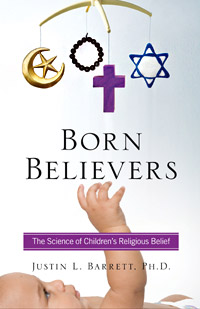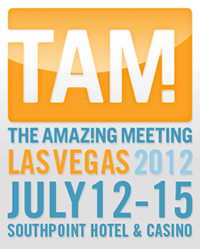In this week’s eSkeptic:
- Follow Michael Shermer: Are you an Atheist or Agnostic?
- Skepticality: Interview with Guy Harrison
- New Episode: Mr. Deity and The Therapist
- Feature Article: One Last Kick at the UFO Can
- Lecture at Caltech this Sunday: The Science of Children’s Religious Belief
- The Amaz!ng Meeting 2012: July 12–15 in Las Vegas

NEW ON SKEPTICBLOG.ORG
Are you an Atheist or Agnostic?
In this week’s Skepticblog, Michael Shermer distinguishes between agnosticism as an intellectual position and atheism as a behavioural position and reiterates what is his preferred “label.”

Interview with Guy Harrison
SKEPTICALITY EPISODE 180
This week on Skepticality, Derek interviews Guy Harrison about his latest book, 50 Popular Beliefs That People Think Are True, a guide to help steer people away from bogus pseudoscience by offering alternative explanations to commonly held unfounded beliefs. Derek also sits down with the founders of the website The Odds Must Be Crazy, a site which highlights extraordinary stories submitted by people who claim to have experienced the supernatural (yet these experiences have perfectly natural explanations).
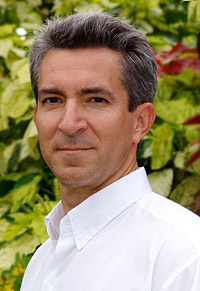
The Latest Episode of Mr. Deity: Mr. Deity and the Therapist
WATCH THIS EPISODE | DONATE | NEWSLETTER | FACEBOOK | MrDeity.com
About this week’s eSkeptic
In this week’s eSkeptic, George Michael and Robert Sheaffer have one last kick at the UFO can in this, the final segment of the dialogue that has happened over the past two weeks. Today, we present George Michael’s response to Robert Sheaffer’s rebuttal, followed by the last word from Robert Sheaffer.
For those of you who missed George Michael’s original review of UFOs: Generals, Pilots, and Government Officials Go on the Record you can read it in eSkeptic from March 28.
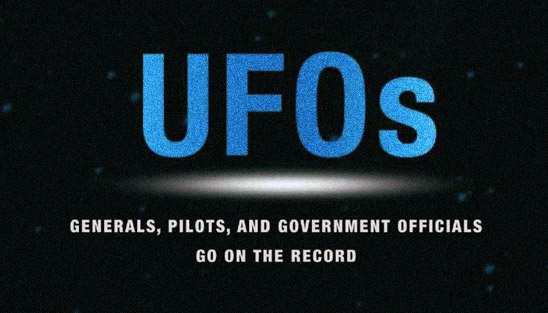
Reply to Robert Sheaffer
by George Michael
In last week’s eSkeptic, Robert Sheaffer lamented that I gave Leslie Kean’s book UFOs: Generals, Pilots, and Government Officials Go on the Record what he sees as an uncritical review. He seems to suggest that I am not qualified to review her book insofar as I am not adequately acquainted with so-called “debunker” literature that dismisses UFO claims.
His core criticism centers on my recounting of the alleged UFO sightings described in Kean’s book. Specifically, he cites the 1980 incidents at Rendlesham Forest in England during which several U.S. airmen were said to have reported seeing a triangular-shaped metallic craft moving near an airbase. For Kean’s book, two of the alleged witnesses, then Sergeant James Penniston and now retired Colonel Charles I. Hart, recount their experiences in detail in which they claim they saw an object that they suggest was extraterrestrial in origin. For his part, Sheaffer chides me for my lack of research into the matter, quoting a UFO skeptic, Ian Ridpath, who commented that if I had taken even a “glance at Wikipedia,” I would have found numerous explanations for the incidents, which in fact, I did. Some explanations attributed the sightings to a nearby lighthouse, while others attributed them to a meteor, and still another to a policeman who played a hoax on the credulous airmen. Case closed? Perhaps. But I’m in the unenviable position of figuring out which explanation is true. It seems that there is no consensus among those who seek to debunk this case.
But from my perspective, what truly happened during one particular incident, such as Rendlesham Forest, really misses the main point of Kean’s book. Contrary to what Sheaffer might believe, I am not entirely convinced of the authenticity of each and every UFO case detailed in her book, for example, the Hudson Valley wave of 1982. Sheaffer fails to address the distinguishing quality of Kean book. That is, she relies upon numerous seemingly credible people to make her case that there is something real behind UFO sightings rather than hoaxes and misidentifications that can be attributed to earthly sources. From what I can infer, her subjects did not provide her with off-the-cuff interviews that they might have later regretted. Rather, they provided lengthy, detailed, and seemingly considered accounts of their experiences and thoughts on UFOs. Her sources are not anonymous persons whom she refuses to identify or shadowy figures in the style of “Carlos Allende” who did much to create the legend of the Philadelphia Experiment. Rather, her subjects included retired high-ranking military officers, former prominent government officials, respected pilots, research scientists, and a former two-term Arizona governor. Now, some UFO claimants might find my preference for public figures as sources to be elitist; however, it’s far easier to ascertain their credibility and these are the people on whom Kean relies. Although Sheaffer disparages the “academic rigor” that I ascribe to Kean’s book, I stand by this characterization.
Despite the impressive case that Kean makes, I made it clear that the burden of proof is still on the UFO claimants insofar as smoking gun evidence has yet to be adduced. And as I explained near the end of the review, I find it well-nigh impossible that the U.S. government could maintain a conspiracy of silence if it indeed had solid information on the extraterrestrial origins of UFOs. Something of such earth-shaking significance would be hard to conceal or ignore for so long. Nevertheless, I think Kean has made a case for UFOs that merits more research into the matter.
Please keep in mind that skepticism cuts both ways. While it is important to question the veracity of UFO claims, the prospect of UFOs (of extraterrestrial origin) should not be categorically dismissed either. Are we to believe that Ms. Kean is so persuasive, that she was able to get all of her subjects to go on the record and publicly lie for her so she could publish a book? Or, were they hoping to launch their own careers on the UFO lecture circuit? Perhaps a few, but I doubt if that is what most of them had in mind. For those who question the reliability of Kean, they will have to impugn her subjects as well, who after all, wrote approximately half of her book.
Response to George Michael
by Robert Sheaffer
I find it very interesting, Mr. Michael, that you refer to the “so-called ‘debunker’ literature that dismisses UFO claims.” That is the kind of terminology we hear from hard-core UFO proponents like Stanton Friedman, but is rather surprising here. I would have called it “the skeptical literature, that critically examines UFO claims.” No, the problem is not your unfamiliarity with said literature. It is your failure to recognize that it even exists, or might have any valid inputs whatsoever. Most pro-UFOlogists do exactly that, saving themselves the trouble of having to read it. Some of the better pro-UFO writers, for example Kevin Randle, will deal with the skeptical literature in at least a perfunctory way. He will write something like “Klass says this is a hoax…”, and then go on to explain why he thinks Klass is wrong. And this is fine. But Leslie Kean does not do this. She cannot have all those “unexplained” cases unless she completely ignores the carefully-reasoned published explanations of those same cases by skeptics, whose writings have at least until now been pretty highly-regarded in skeptical publications.
Let me make it clear that I am by no means suggesting 100% acceptance of the explanations of UFO cases published by Philip J. Klass or anyone else. I do have some important differences with Klass’ explanations of a few major cases. Still, I would say that Klass’ explanations were at least 80% correct, and a great deal of investigation is underway today concerning any perceived loose ends.
I’m glad, Mr. Michael, that you’ve chosen Rendlesham to make your stand, because it is here we find one of the widest divergences between the Kean Version, and reality. You write, “then Sergeant James Penniston and now retired Colonel Charles I. Halt, recount their experiences in detail in which they claim they saw an object that they suggest was extraterrestrial in origin.” Mr. Michael, did you realize that James Penniston told Ancient Aliens on the History Channel of telepathically receiving a binary message from the craft (Google it!), whose occupants are, he says, “time travelers”? Do you accept this claim (a claim that wasn’t made until decades after the event)? As for Charles Halt, in 2010 he wrote an affidavit hugely contradicting his original memo of 1980. For example, he now says that the UFO flew directly over him, “stopped over head and sent down a small pencil like beam, sort of like a laser beam,” a detail completely lacking in his original memo and tape, which tells only of lights in the sky at a low ten-degree elevation. Do you still think we should accept Halt’s claim to have seen an extraterrestrial craft?
As for the Wikipedia entry on Rendlesham, you write “Some explanations attributed the sightings to a nearby lighthouse, while others attributed them to a meteor, and still another to a policeman who played a hoax on the credulous airmen… It seems that there is no consensus among those who seek to debunk this case.” You really need to read that more carefully. The event was due to misinterpretation of a series of nocturnal lights—a fireball, the Orford Ness lighthouse and bright stars—by different persons at different times. (The “policeman’s hoax” claim has been withdrawn.) When local UFO excitement gets strong enough, every light in the sky becomes an extraterrestrial craft. There is no controversy among skeptics as to who saw what, when, at Rendlesham.
“Are we to believe that Ms. Kean is so persuasive, that she was able to get all of her subjects to go on the record and publicly lie for her so she could publish a book?” Don’t be absurd, Mr. Michael! Very few of the cases in Kean’s book are new—most of them were first published decades ago. Her contribution was merely to dust them off, and get a new narrative from the person(s) involved. While some like Penniston and Halt are obviously UFO opportunists, the great majority of people reporting encounters with extraordinary flying objects are perfectly sincere. And high-status persons are not automatically better witnesses than ordinary ones, as Kean seems to think. In fact, Project Blue Book’s scientific UFO consultant, J. Allen Hynek, wrote, “Surprisingly, commercial and military pilots appear to make relatively poor witnesses”—a fact Kean conceals from her readers, while quoting other pages of that same book.
Finally, you suggest that “the prospect of UFOs (of extraterrestrial origin) should not be categorically dismissed either.” Unfortunately, that places us in the position of dismissing either these UFO sighting reports, or the laws of physics. “A spacecraft can generate thrust only by expelling mass…Reported UFOs cannot be under extraterrestrial control if the laws of physics are valid”—William Markowitz, “Physics and Metaphysics of Unidentified Flying Objects,” (Science, 157, 1274–79). The motto of the Royal Society of London, the world’s first scientific body (founded in 1660), is nullius in verba—“take nobody’s word for it.” Especially uncorroborated stories that contradict known laws of physics.
Order Skeptic back issues on the topic of UFOs ($6 each)
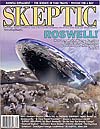
ROSWELL (10.1)
Buy it now
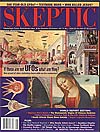
MEDIEVAL UFOs?
Buy it now
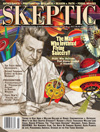
THE MAN WHO INVENTED FLYING SAUCERS
Buy it now
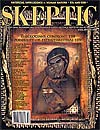
A.I. AND THEOLOGY
OF UFOs
Buy it now
Lecture at Caltech this Sunday
Born Believers: The Science of Children’s Religious Belief
with Dr. Justin Barrett
Sunday, April 15, 2012 at 2 pm
Baxter Lecture Hall
FROM A NOTED DEVELOPMENTAL PSYCHOLOGIST and anthropologist at Oxford University, this fascinating theory about the value of religious faith posits that we are all predisposed to believe in God from birth. We are all Born Believers, explains Professor Justin L. Barrett. It begins in the brain. Infants, under the sway of powerful internal and external forces, make sense of their environments by imagining a creative and intelligent agent, a grand controller who makes the sun shine and the night fall. In the chaos of childhood, where so much is out of the child’s control, this belief in a morally good creator can bring tremendous comfort and calm. A child’s world is then filled with beings who intentionally act upon the environment, maintaining order. Summarizing scientific experiments conducted with children across the globe, Professor Barrett illustrates the ways human beings have come to develop complex belief systems about God’s omniscience, the afterlife, and the immortality of deities. He shows how the science of childhood religiosity reveals, across humanity, a “Natural Religion.”
TICKETS are first come, first served at the door. Seating is limited. $8 for Skeptics Society members and the JPL/Caltech community, $10 for nonmembers. Your admission fee is a donation that pays for our lecture expenses.
Followed by…
Subliminal: How Your Unconscious Mind Rules Your Behavior
with Dr. Leonard Mlodinow
Sunday, April 29, 2012 at 2 pm
Announcing The Amaz!ng Meeting 2012
Southpoint Hotel & Casino, Las Vegas, NV
July 12–15, 2012
THE AMAZ!NG MEETING (TAM) is an annual celebration of science, skepticism and critical thinking. People from all over the world come to TAM each year to share learning, laughs and the skeptical perspective with their fellow skeptics and a host of distinguished guest speakers and panelists.
The James Randi Educational Foundation (JREF) has hosted its annual Amaz!ng Meeting since 2003 as a way to promote science, skepticism and critical thinking about paranormal and supernatural claims to the broader public. TAM has been held in Las Vegas, NV since 2004 and has become the world’s largest gathering of like-minded science-advocates and skeptics.
With yet another incredible lineup of speakers, hands-on workshops, and entertainment, this is sure to be an Amaz!ng Meeting you won’t want to miss! Check out the entire program, and follow @jref on Twitter for the latest #TAM2012 news and announcements.



